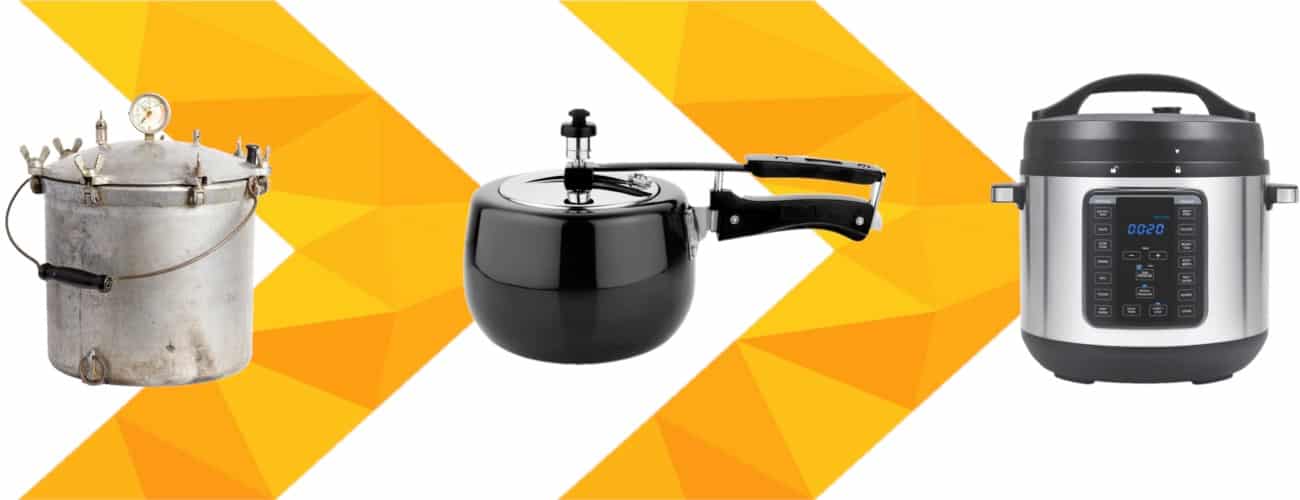
Types Of Pressure Cookers
How are the types of pressure cookers change over time? A French physicist named Denis Papin can be said to have invented the pressure cooker. In 1681, he came up the steam digester as a way to cook food quickly by increasing the boiling temperature of water within a sealed unit and cooking by steam power. Although his steam digester was not in general use back then, it was part of the general movement to power everything by steam and it earned him a place in the Royal Society of London.
Pressure cookers began being produced commercially in the latter part of the nineteenth century but it was not until the 1930s that they first became available for home use. An inventor called Alfred Fischer presented his Flex-Seal Speed Cooker at the 1939 New York World Fair and his company National Presto Industries was one of the first pressure cooker companies in existence. Other companies in the USA and across Europe soon followed.
First-generation pressure cookers
First-generation pressure cookers were very basic. They used a valve, known as a jiggle top which released pressure while cooking but the cookers were well known for exploding and causing accidents. By the 1960s, jiggle top pressure cookers come with a selection of weight valves so that the user could vary the pressure by changing the valve before cooking.
Jiggle top pressure cookers have a scary reputation but by the mid-sixties, there were safety features in place. That said many people think of these early models when considering buying pressure cookers.
One feature that caused the disquiet was the noise of the valve that jiggled and expelled steam while cooking in an alarming way. This cooking utensil was not for the faint-hearted but millions of these were in daily use around the world and all pressure cookers today work on the same principles and are derived from this basic model.
Second generation pressure cookers
Second-generation pressure cookers were not as alarming to use and there are still plenty of these around today. The valve is spring-loaded and hidden from view and you do get a couple of pressure settings to choose from without having to change the valve.
Second-generation pressure cookers are certainly less alarming to use. They do not always release steam while cooking and instead only vent steam when the pan is opened. Second-generation pressure cookers usually feature an indicator or dial so that you can see when pressure is reached and you can increase pressure too by turning the pressure dial. This type of pressure cooker is only designed to be used over a source of direct heat; the stovetop and although it is fairly basic, it does enable you to cook food very quickly.
Pressure cooker experts can also carry out a range of functions with this type of pressure cooker such as sautéing before cooking under pressure.
And of course, as with the first-generation models, they enable the fast cooking of food and many other benefits. The problem is that they are not easy to use in any other way and even with added safety functions such as automatic steam release when the pan is operating at too high temperature; many people have been reluctant to use them because of perceived safety issues. One advantage of a stovetop model is that you can quick-release by the use of cold water.
Third-generation pressure cookers
Third-generation pressure cookers were first developed in 1991 and these moved the cooking away from the stovetop and instead were self-contained electric appliances that we are familiar with today. The electricity automatically provides a stable source of heat and the automatic timer enables you to add your food and water to the pot, set the timer and wait for it to cook.
These types of early third-generation pressure cookers are not without problems. Because they are electric you cannot quick-release by running cold water over the unit and instead, they must be vented slowly and with care to avoid steam burns due to the vapor escaping from the vent.
Later developments, the second phase of these third-generation pressure cookers, included a digital preset timer function enabling delayed cooking and you also benefit from a digital display showing you when the pressure has been reached and remaining cooking time.
The final phase of the third-generation pressure cookers added preset functions based on the types of food that you wished to cook and a range of settings designed to simplify the process further. Easy to use these presets are based on heat intensity, duration of cooking and heating intensity.
Multi-function pressure cookers
Today pressure cookers have entered a whole new phase. As well as functioning as pressure cookers with a range of preset functions, they can provide other cooking methods such as sauté and browning, slow cooking, rice cooking, steaming, and yogurt-making all within the same unit.
Easy to use and to operate, you simply add your food and liquid to the pot choose the function you need from one of the many presets and switch on the unit. You can also use delayed timing, leaving the pressure cooker to cook automatically while you are out or doing something else.
In conclusion
The major difference between the old fashioned jiggle top pressure cookers and today’s multi-function models is that the new models are much easier to use. In theory, most of the pressure cooking functions provided by the new models could be carried out on an old-style jiggle top yet for most people this is just too difficult to do.
You can sauté and brown in an old-style jiggle top, you can control the pressure and you can quick release too. The difference is that this requires you to monitor the pressure cooker throughout the process. The new multi-function pressure cookers enable you to do much more than simple pressure cooking and are much safer and more convenient to use.